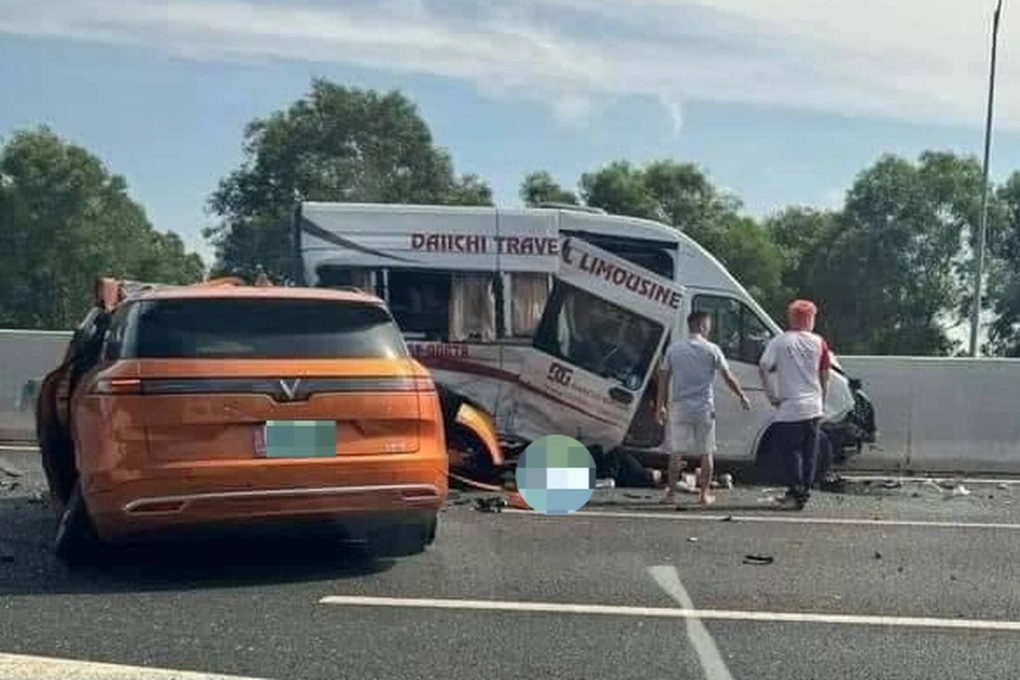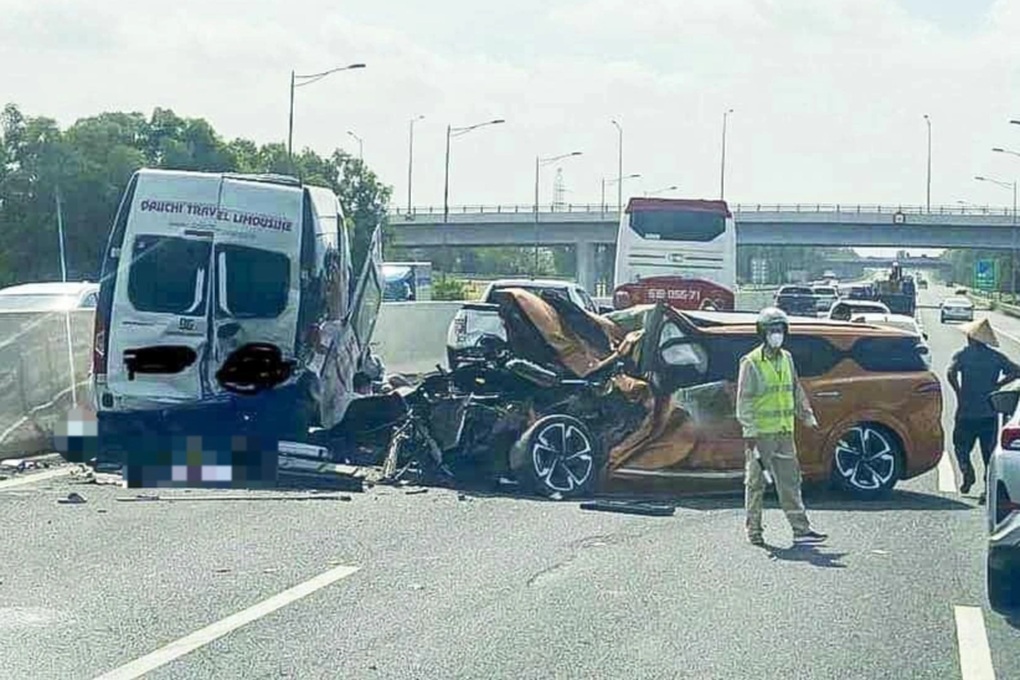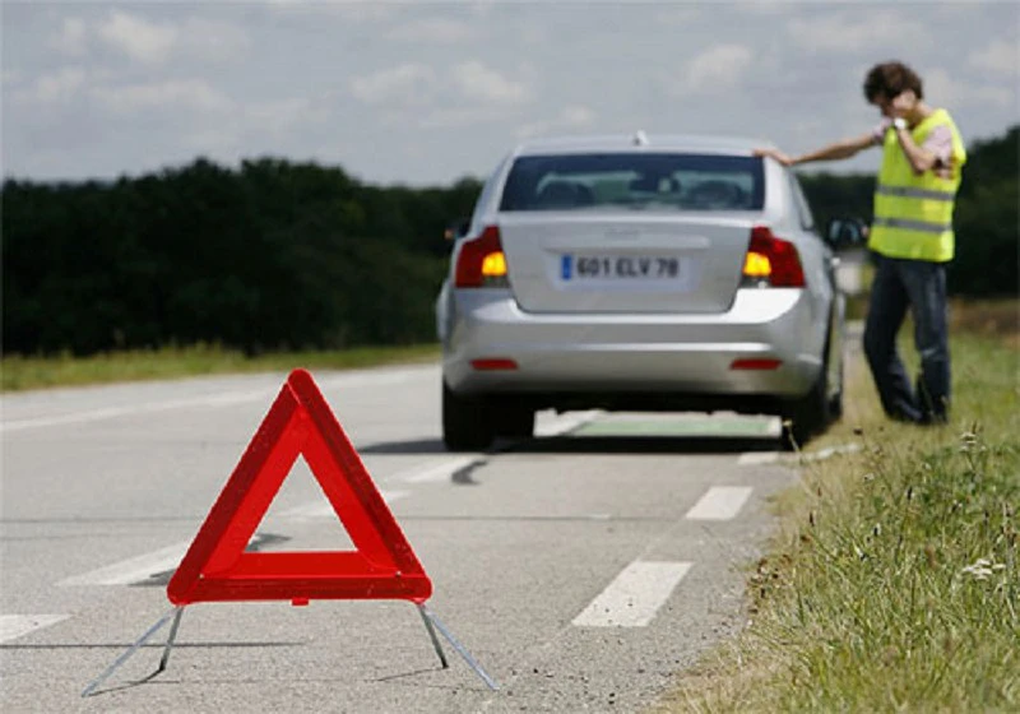
An accident occurred around 9:00 on July 11, when a 9-seater passenger car (converted from a 16-seater) traveling on the Hanoi - Hai Phong expressway towards Hai Phong, when it reached Gia Loc town (Hai Duong) collided with the rear of a pickup truck. Both vehicles stopped in the leftmost lane, where the maximum speed limit is 120km/h.
While the two drivers were on the road to resolve the collision, a 7-seater car traveling at high speed crashed into the side of the passenger car and spun across the road.
As a result, one driver and one passenger died on the spot, while 10 others were injured and taken to the hospital for treatment.

At the scene, the passenger car was dented on the side, and the doors were detached (Photo: OFFB).

The 7-seater car's front end was smashed, airbags deployed, lying across the middle lane (lane 2) of the expressway (Photo: OFFB).
This multiple-vehicle accident once again highlights the danger of stopping vehicles on the expressway. Especially in the leftmost lane (lane 1), vehicles usually travel at the maximum allowed speed, in this case, 120km/h, so drivers need to be careful and not lose focus or fail to maintain a safe distance from the vehicle ahead to observe and handle situations to prevent multiple accidents like the one that occurred.
Therefore, in the event of an incident on the expressway, the driver should immediately turn on the emergency lights (press the red triangle button on the car), place warning objects to attract the attention of other drivers, and urgently try to move the vehicle to the emergency stop lane, even using force to push the car.
How to properly place warning objects behind the vehicle?
Warning objects can be reflective triangles, cone-shaped markers, large tree branches, flashlights, or anything else... Place warning objects behind the stopped vehicle at an appropriate distance so that drivers of vehicles behind have enough time to slow down and steer clear.

When required to stop the vehicle in the middle of the road, place the warning signs a sufficient distance away to "signal" other drivers to handle it in time (Photo: CarsGuild).
Regarding the distance to place warning objects behind a vehicle in a crisis, you can refer to the National Technical Regulation QCVN 41:2016/BGTVT on road signs, although this regulation has now been replaced by QCVN 41:2019/BGTVT.
According to the regulation, if the average operating speed of the vehicle is below 20km/h, the distance from the sign placement to the warning location is less than 50m.
If the average operating speed of the vehicle is 20-35km/h, the distance from the sign placement to the warning location is 50-100m.
If the average operating speed of the vehicle is 35-50km/h, the distance from the sign placement to the warning location is 100-150m.
If the average operating speed of the vehicle is 50km/h or above, the distance from the sign placement to the warning location is 150-250m.
Therefore, under normal traffic conditions on national highways and expressways, the appropriate distance to place warning objects is 150-250m.
In addition, if possible, stack cone-shaped markers to create a movable barrier to prevent other vehicles from entering the area of the vehicle in crisis.
To ensure the safety of lives, when a vehicle faces a crisis, everyone should exit the vehicle, move behind the roadside guardrail or as far away from the road lanes as possible.
How to maintain a safe distance from the vehicle in front?
Decree No. 31/2019/TT-BGTVT provides clear and detailed guidelines on the safe distance between two vehicles when traveling, corresponding to the speed of the vehicle (under dry road conditions) as follows:

On some expressways, there are signs indicating distances of 0m, 50m, 100m, or 70m, 140m... to help drivers adjust the distance from the vehicle in front more easily.
In addition to ensuring a safe distance, when driving in general and on the expressway in particular, you also need to focus on observing to be able to react promptly to unexpected situations.
In practice, to maintain a safe distance from the vehicle in front on the expressway, drivers usually apply the 3-second rule, as research has shown that in normal conditions, 3 seconds is enough time for the driver to react to situations such as a vehicle in front breaking down, encountering obstacles on the road...
The essence of the 3-second rule is the time needed for the driver to safely stop the vehicle after braking, based on comprehensive calculations of the driver's reaction speed, the inertia of the vehicle after braking to bring the vehicle to a complete stop and avoid collisions.
To determine the "3-second" distance, find a fixed object by the roadside to use as a reference point; it can be a traffic sign, a lamp post, or a tree... When the vehicle in front passes the reference point, count 1... 2... 3... in a 3-second rhythm.
After counting, if your vehicle reaches the reference point at the end of the count, the distance from the vehicle in front is deemed safe. Otherwise, if you haven't finished counting 3 seconds and have reached the reference point, you need to slow down to increase the distance, ensuring a safe distance.
The 3-second rule is applied under good weather conditions, dry roads, and clear visibility... In rainy weather or limited visibility conditions, the rule needs to be doubled to 6 seconds, meaning maintaining a distance from the vehicle in front twice the usual distance.
Hãy là người đầu tiên bình luận!
Bình luận: